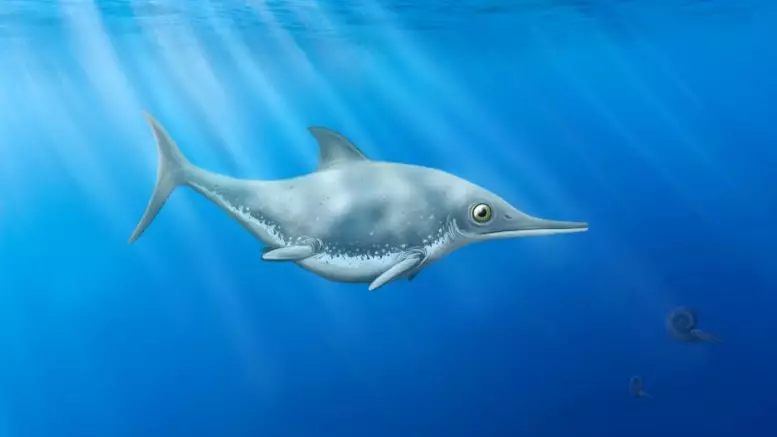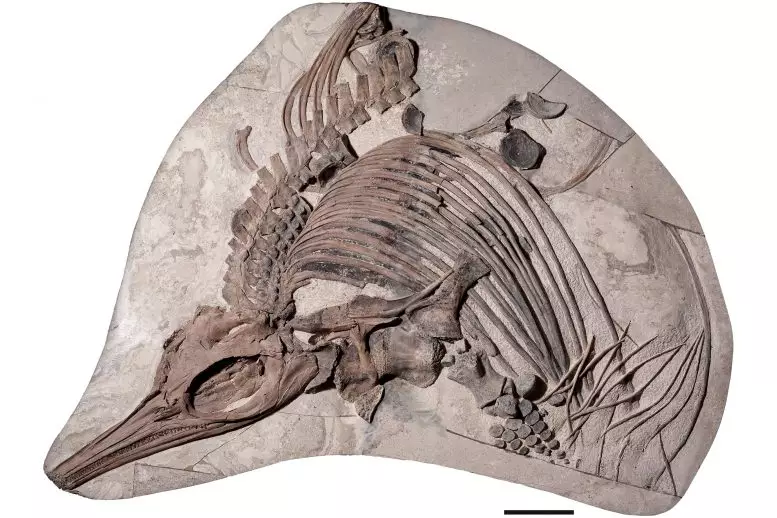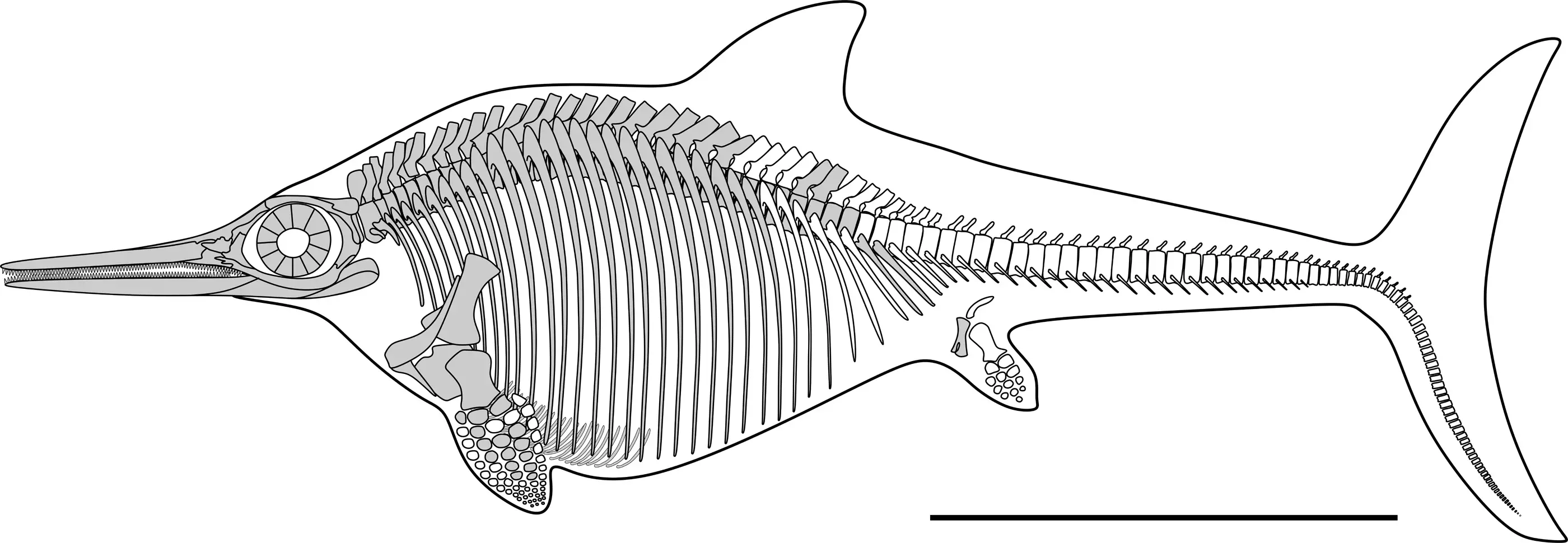
Scientists have discovered the fossil of a mysterious marine reptile from 150 million years ago belongs to a previously undiscovered species.
The well-preserved reptile was found in a Late Jurassic deep marine deposit along the English Channel coastline in Dorset.
Experts say the aquatic reptile was part of a group known as ichthyosaurs, which were streamlined marine predators from the Late Jurassic period.
Advert
Paleontologist Megan L. Jacobs, a Baylor University doctorial candidate in geosciencses and co-author of a study published in the journal PLOS ONE, said: "This ichthyosaur has several differences that makes it unique enough to be its own genus and species.
"New Late Jurassic ichthyosaurs in the United Kingdom are extremely rare, as these creatures have been studied for 200 years.
"We knew it was new almost instantly, but it took about a year to make thorough comparisons with all other Late Jurassic ichthyosaurs to make certain our instincts were correct.
"It was very exciting to not be able to find a match."

Jacobs named the specimen 'Thalassodraco etchesi', which means 'Etches sea dragon' - which is a nod to fossil collector Steve Etches MBE, who found the specimen in 2009 after a cliff crumbled along the seaside.
Advert
Since being discovered, the specimen has been housed in The Etches Collection Museum of Jurassic Marine Life in Kimmeridge, Dorset.
Study co-author David Martill, Ph.D., professor of paleontology at the University of Portsmouth in Portsmouth, said: "Now that the new sea dragon has been officially named, it's time to investigate its biology.
"There are a number of things that make this animal special."
Advert
The creature is estimated to have been about 2.5 metres (eight feet) long, and appears to share some similarities with sperm wales with an 'extremely deep rib cage'.
This may have allowed for larger lungs and additional space for internal organs so that they weren't crushed under pressure.

Along with large eyes, which allowed it to see in low light, it also had hundreds of tiny teeth - indicating its diet may have consisted of squid and small fish.
Advert
Jacobs continued: "They still had to breathe air at the surface and didn't have scales.
"There is hardly anything actually known about the biology of these animals.
"We can only make assumptions from the fossils we have, but there's nothing like it around today.
"Eventually, to adapt to being fully aquatic, they no longer could go up onto land to lay eggs, so they evolved into bearing live young, tail first.
Advert
"There have been skeletons found with babies within the mother and also ones that were actually being born."
Featured Image Credit: Megan Jacobs